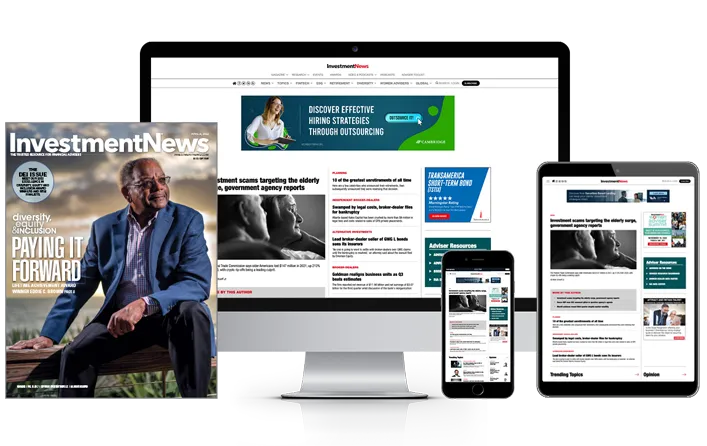Many advisers send out monthly, bimonthly or quarterly newsletters to clients. In these modern days, the newsletters are sent out electronically. But are they worth the time and expense?
There are, essentially, two options for newsletters: “canned” products and “do it yourself.” The pros and cons of each are pretty obvious; one is less work and more polished, the other is more labor-intensive and more personal. Of course, you can always do a hybrid.
In my practice, I spend about $1,300 per quarter and here's an idea of what I get.
(More: 4 ways automation technology is changing the way RIAs invest)
I have used Thomson Reuters' Planning for Prosperity/Wealth Management Advisor newsletters. I have the option to replace up to one article per newsletter with my own writing. It's a nice newsletter, very professional looking and the articles seem to be at the right level for my clients and prospects. For example, the upcoming publication offers these four articles:
• 3 Benefits of DAF Giving
• Are You at Risk for AMT Liability?
• Currency Movements and Your Portfolio
• Taking the Right Steps When Using an FLP or LLC
Another resource that I have found to be helpful is Broadridge's Forefield Advisor. It is a free service offered to AICPA Personal Financial Planning Section members and can also be purchased directly. In addition to providing great research tools, legislative updates and presentations, the site offers a build-it-yourself newsletter. You can also use any of the various articles or client letters as content in a newsletter that you design yourself.
The current newsletter includes the following articles:
• It's Complicated: Money and Happiness
• Planned Charitable Giving
• Millennials vs. Boomers: How Wide Is the Gap?
• How Important Are Dividends in the S&P 500's Total Returns?
• Are Stock Dividends Reliable as a Source of Income?
In the end, the question is whether or not your clients will appreciate your newsletters. In my (humble) opinion, the answer is yes. Any time you communicate with a client, it is an extra touch, a way to continue to cement your relationship.
Whether they read one article that catches their interest, read everything or just delete the email, a newsletter is another way to show your clients that you care.
A word of advice: No matter which method you use, be sure to include your personal introduction at a minimum. Otherwise, your personality won't shine through.
Sheryl Rowling is chief executive of Total Rebalance Expert and principal at Rowling & Associates. She considers herself a non-techie user of technology.







